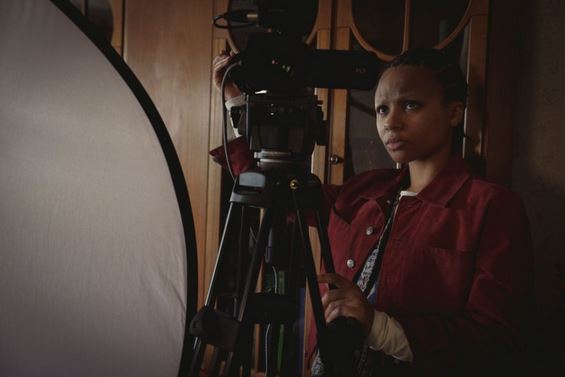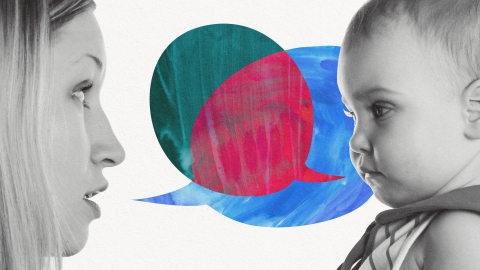
Ranking Black Mirror Season 6 Episodes From Worst to Best
Prepare yourself for a dose of technology-induced unease. No, it’s not the daily barrage of alarming news about AI. It’s the return of Black Mirror! After a hiatus of four years, creator Charlie Brooker has made a comeback on Netflix with five fresh episodes of his chilling anthology series. As always, the quality is a mixed bag, and the inclusion of A-list guest stars like Salma Hayek, Aaron Paul, and Zazie Beetz adds to the allure. However, there is a surprising twist in Season 6 that may bring some relief to certain viewers: it strays away from the familiar “What if phones, but too much?” premise, which defined its predecessors. Once you’ve watched the episodes, you’ll have plenty of time to delve into this shift in tone. For now, I’ve taken the liberty of ranking the episodes from the least to the most exceptional, to assist you in deciding which ones to prioritize.
5. Episode 4: “Mazey Day”
Back to the early 2000s, a time when tabloids thrived on cutthroat competition, the public’s fascination with chaotic young women reached its peak, and the combination of smartphones and social video had yet to democratize the surveillance of celebrities. Our central character is Bo, portrayed by the talented Zazie Beetz from Atlanta. Bo works as a paparazzi photographer and is consumed by guilt after capturing images of a C-list actor engaged in a secret encounter with another man. Unfortunately, these pictures lead to the actor’s public outing, resulting in his tragic suicide. Determined to escape this predatory profession, Bo yearns to break free. However, she finds herself in desperate need of money, which tempts her into accepting her fellow paparazzo’s proposition—played by Danny Ramirez from Top Gun: Maverick—to pursue one final, lucrative opportunity. The objective is to capture the first photograph of Mazey Day, a starlet who disappeared from the public eye after a car accident. This exclusive image could fetch a staggering sum of $30,000, or even $40,000 if it portrays her as a distressed individual grappling with substance abuse.
In line with the majority of episodes in Season 6, “Mazey Day” takes place in the past and lacks any direct connection to technology, aside from the telephoto lenses used by Bo and her colleagues. Its chosen dystopian backdrop is the Hollywood of the recent bygone era. However, considering the recent reevaluations of mistreated individuals from that time (think: Britney Spears, Paris Hilton, Brittany Murphy), and the prevailing Y2K nostalgia that has engulfed our culture, Brooker’s commentary on such exploitation feels somewhat delayed and insufficient. Consequently, nearly every plot twist in the episode becomes predictable. The one significant twist that stands out—when you encounter it—is merely too arbitrary to leave a significant impact. The tendency to overemphasize relatively obvious points has always been a characteristic of Black Mirror. However, “Mazey Day” doesn’t suffer from that issue; it lacks substance and purpose in the end.
4. Episode 2: “Loch Henry”
Set in present-day Scotland, Davis (portrayed by Samuel Blenkin from The Witcher: Blood Origin) and his girlfriend and collaborator, Pia (renowned for her role in Industry, Myha’la Herrold), make a brief stop to visit Davis’ mother before embarking on their mission to film a nature documentary. Davis confidently asserts that their project will tell the story of one of the few remaining strongholds against the commercialization of nature. However, being a part of the Black Mirror universe, you can expect Davis’s quaint idealism to be shattered into pieces. The unraveling begins when Pia questions why Davis’s picturesque hometown, Loch Henry, isn’t a popular tourist destination. She soon discovers that a series of gruesome murders took place there in the late ’90s, and Davis’s late father, a police officer, was injured while apprehending the killer. Convinced that they have no alternative, Pia proposes abandoning their nature documentary and creating a prestigious true-crime series that is bound to attract the attention of Streamberry, the show’s Netflix-like counterpart.
While “Mazey Day” reflects on the media-inflicted cruelty that permeated popular culture a generation ago, “Loch Henry” takes aim at its exploitative counterpart in the present day. However, Charlie Brooker’s critique of the true crime genre—a genre that has already been extensively parodied and scrutinized—feels somewhat redundant, though not entirely untimely, much like his critique of paparazzi. The episode manages to find partial redemption through an intense performance by Herrold and a handful of astute jabs at the artistic aesthetics of crime documentaries in the streaming era. Unfortunately, just as you begin to appreciate these aspects, the episode’s flippant ending swoops in, overshadowing anything you might have enjoyed.
3. Episode 1: “Joan Is Awful”
Annie Murphy, fresh off her role in the AMC meta-comedy Kevin Can F**k Himself, takes the lead in the Season 6 premiere as a stressed-out woman in her thirties who inexplicably finds herself trapped within a television series. In a strange twist of events, the show she discovers is titled Joan Is Awful—coincidentally sharing her name—and she stumbles upon it while browsing through the offerings of Streamberry, the fictional streaming platform within the episode. To Joan’s astonishment, the show appears to be a mildly fictionalized reenactment of the rather unremarkable day she just experienced, with none other than Salma Hayek portraying her character. Naturally, this puzzling situation leaves Joan and her fiancé (portrayed by Avi Nash from The Walking Dead) utterly bewildered. The burning question remains: What exactly is happening here?
“Joan” encapsulates the quintessential essence of Black Mirror, making it one of the standout episodes of this season. It immerses Joan in an unsettling journey through a maze of personalized and infinite content, while also delving into various pressing issues surrounding contemporary technology and ethics. However, if you approach this episode with the expectation of chillingly perceptive insights, you may find yourself disappointed. Instead, “Joan” offers a generous dose of near-future surrealistic enjoyment reminiscent of films like Being John Malkovich. The episode boasts an exceptional cast, including Michael Cera, Rob Delaney, and Himesh Patel, who contribute to the overall immersive experience. For those who closely follow the streaming wars, it’s particularly thrilling to witness Brooker taking jabs at the individuals who hold the power at his own network. Personally, I couldn’t help but gasp at the appearance of a Streamberry executive bearing an uncanny resemblance to Netflix CCO Bela Bajaria.
2. Episode 5: “Demon 79”
With a visually striking opening credit sequence and a deliberate nod to the gritty aesthetics of 1970s video nasties, this particular episode stands out as the most conspicuous deviation in a season filled with unique stories. Set in 1979, this installment, titled “Red Mirror Film,” revolves around Nida (portrayed by Anjana Vasan from We Are Lady Parts), a solitary shoe saleswoman in a department store. Nida’s sense of isolation becomes even more profound as her Northern English town grapples with a surge in racism and anti-immigrant sentiment. In a twist of fate, while Nida retreats to the store’s basement to enjoy her biryani, she unintentionally activates a mystical artifact, summoning a fledgling demon (played by Paapa Essiedu from I May Destroy You and The Lazarus Project). This otherworldly creature becomes her guide, leading her on a harrowing journey involving human sacrifices that she must undertake to avert an impending apocalypse.
Unconventionally, “Demon 79” diverges from the typical themes of technology, the future, and the pervasive influence of mass media that often dominate this show. Instead, it delves into the realm of occult horror. Despite this departure, if it weren’t for this categorization misstep, “Demon 79” would easily secure the top spot as my favorite episode of the season. (Perhaps Netflix could have presented it as a standalone film by the creator of Black Mirror?) The screenplay, co-written by Brooker and Bisha K. Ali, known for her work on Ms. Marvel, delivers a blend of humor, fear, and intelligence. The episode is infused with copious amounts of blood, scathing criticism, and a surprisingly pivotal scene featuring the eccentric Eurodisco hit “Rasputin” by Boney M. The chemistry between Vasan and Essiedu is exceptional, and the ending, unlike the rest, is one that I genuinely adored. However, it is important to note that “Demon 79” diverges significantly from the typical Black Mirror narrative, making it a unique and standout entry in the series.
1. Episode 3: “Beyond the Sea”
For those yearning for an emotionally charged episode in the vein of Black Mirror classics like “Be Right Back” and “The Entire History of You,” your search ends here. Brooker’s 80-minute opus will strike a chord of familiarity, initially reminiscent of last year’s scandalous Oscar contender, “Don’t Worry, Darling.” However, rest assured, the actual premise of this episode takes a distinct turn. Set in an alternate 1969, two astronauts (Aaron Paul and Josh Hartnett) find themselves constantly connected to machines aboard their spaceship, which allow their consciousness to be transmitted into robotic replicas on Earth. These replicas are exact copies of themselves, enabling the astronauts to be physically present in two places simultaneously—slumbering in outer space while sharing invaluable moments with their families below. However, when David (Hartnett) encounters an unimaginable catastrophe, Cliff (Paul) seeks guidance from his wife (Kate Mara) on how to ensure that David can fulfill their precarious mission.

“Beyond the Sea” accomplishes what only a select few standout episodes of Black Mirror achieve: it employs a specific technological advancement as a catalyst for exploring the intricacies of human emotions and relationships. In this regard, and in its wistful undertone, it brings to mind the poignant sci-fi novels of Kazuo Ishiguro, such as “Never Let Me Go” and “Klara and the Sun.” While Kate Mara and Josh Hartnett deliver commendable performances, it is Aaron Paul who truly shines in a role that demands more than meets the eye initially. The ending is bound to elicit divisive reactions; personally, it did not resonate with me. However, ultimately, your response to the final moments will be a matter of personal taste. I must admit that Brooker undeniably earns the conclusion, regardless of my own sentiments.











